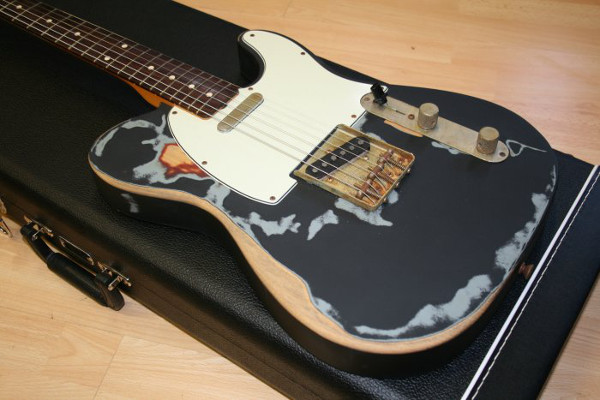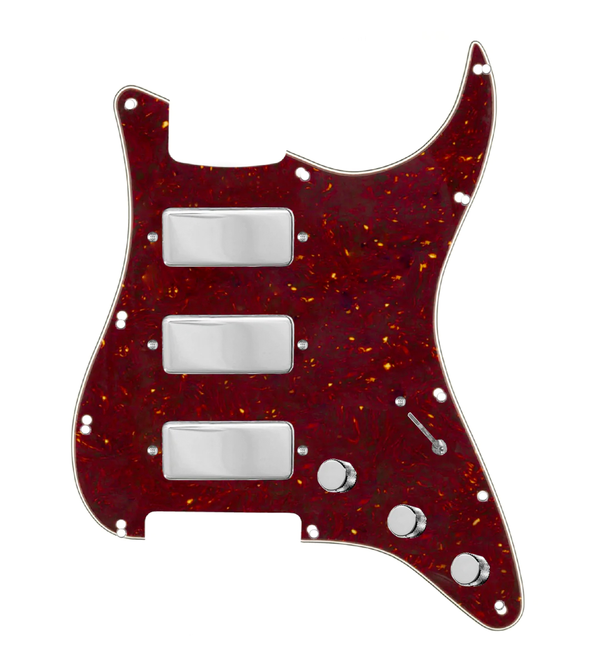When you first set eyes on the Fender ’59 Journeyman Stratocaster, what strikes you isn’t the heavy wear or exaggerated distressing typical of relic guitars. Instead, you notice the lightest relicing imaginable—an artfully subtle finish that mimics a guitar gently used but far from abused. This unexpected approach to relicing challenges the common perception of vintage repro guitars, inviting us to explore why less can truly be more when it comes to aging a guitar. As a professional guitarist and a scientist with a deep passion for the technology behind stringed instruments, I’m uniquely positioned to dissect the Fender Custom Shop Stratocaster’s nuanced craftsmanship. In this article, we’ll take a comprehensive technical deep dive into the Fender ’59 Journeyman Stratocaster, examining its intricate specifications, transitional design elements, and the scientific rationale behind its subtle relicing techniques—revealing why these features matter profoundly for tone, playability, and collector value.
Key Takeaways
- The ’59 Journeyman’s light relicing technique offers a unique ‘new, old stock’ aesthetic that preserves playability and tone. Readers learn how relicing affects both appearance and feel without compromising performance.
- Transitional design elements like the tri-laminate pickguard and ’60s oval C neck profile blend vintage authenticity with modern playability. Understanding these features helps players appreciate design evolution and its impact on comfort and sound.
- Scientific insights into wood selection, fingerboard radius, and hand-wound pickups reveal how material and construction choices shape the guitar’s voice. Empowers readers with technical knowledge to evaluate and compare vintage repro guitars critically.
The Art of Subtle Relicing: Mimicking ‘Used but Not Abused’

The relicing spectrum in vintage repro guitars ranges from the heavily distressed, road-worn look to the barely-there, gently aged finish. The Fender ’59 Journeyman Stratocaster firmly situates itself at the light end of this spectrum, employing a relicing philosophy that aims to replicate the natural wear of a guitar that has been played regularly but lovingly maintained. This approach contrasts sharply with the more common, heavily reliced guitars that often showcase exaggerated dings, heavy finish checking, and hardware corrosion.
The light relicing on the Journeyman involves minimal finish wear, subtle fretboard darkening, and gentle hardware aging, all executed with scientific precision to avoid compromising the instrument’s integrity. This means the alder body’s finish retains much of its original gloss and protection, while the hardware—though treated to suggest age—remains structurally sound and fully functional. This careful balance ensures that the guitar’s tone and playability are preserved, avoiding the common pitfalls of heavy relicing, such as finish cracking or pickup degradation.
For players and collectors alike, this subtle relicing offers both aesthetic and tactile benefits. Visually, it evokes the charm and character of a vintage instrument without the visual noise of overdone wear. Tactilely, the finish feels comfortably broken in, enhancing playability without the roughness or stickiness sometimes found on newer guitars or heavily reliced pieces.
Compared to typical relic guitars that often evoke a sense of a ‘battle-scarred’ past, the ’59 Journeyman feels more like a time capsule—an instrument that has quietly witnessed its fair share of music without the drama. This restrained approach to aging invites players to connect with the guitar’s history while appreciating its freshness. For those interested in a deeper understanding of how artisans create such nuanced aged finishes, the art of ageing guitars and how to achieve the road worn look offers an excellent exploration of the delicate balance between wear and preservation.
Relicing is a time capsule that balances history with freshness, preserving the soul of the guitar while keeping it ready for the stage.

Video tutorial: Mastering the relic guitar process
Transitional Design Elements: Bridging Vintage and Modern

The ’59 Journeyman Stratocaster is a fascinating study in transitional design, capturing the evolutionary nuances of Fender’s late ’50s to early ’60s Stratocaster era. One of the most immediately noticeable features is the tri-laminate pickguard, a hallmark of this period. Unlike the single-ply white pickguards found on earlier models, the tri-laminate combines layers of white, black, and white plastic, offering enhanced durability and a visual depth that nods to vintage authenticity.
The neck profile is another critical transitional element. The ’60s style oval C neck shape featured on the Journeyman is slightly thicker and rounder than modern slim profiles, delivering a comfortable grip that suits a variety of playing styles. This ergonomic design supports extended playing sessions without fatigue, marrying vintage feel with contemporary comfort.
Adding to playability is the modern 241mm (9.5″) fingerboard radius. This radius strikes a perfect balance: it’s curved enough to facilitate smooth chord voicings and articulate fingerpicking, yet flat enough to allow for expressive string bending without fretting out. The fingerboard itself is crafted from dark rosewood, complete with clay dot position markers—a subtle but effective vintage nod that enhances visual contrast and fingerboard navigation.
The fingerboard radius is the curvature of a racetrack, guiding smooth note transitions and ensuring your fingers glide effortlessly across the frets.
For a deeper dive into how these transitional features compare with other Stratocaster models, explore Stratocaster Guide: Electric Guitar Models Explained – Fender. This detailed guide breaks down the nuances between vintage and modern Strat designs, helping you fully appreciate the blend of heritage and innovation in the ’59 Journeyman.
Video tutorial: Understanding Fender Neck Shapes
Material Science and Tonal Impact: Woods and Pickups

Understanding the Fender ’59 Journeyman Stratocaster’s tonal character requires a look into its material composition and construction techniques, where science meets artistry. The alder body is a classic choice, prized for its balanced tonal response. Alder offers a pleasing midrange presence and a weight that strikes a comfortable balance, neither too heavy nor too light, which contributes to the guitar’s resonance and sustain.
The flamed maple neck is not just a visual delight; its dense grain structure adds brightness and sustain to the overall sound. Maple’s stiffness enhances note definition and attack, making it a favored wood for necks in vintage repro guitars aiming for authentic ’50s and ’60s tones.
Hand-wound pickups, specifically the ’60/63 vintage-voiced single coils on this model, play a pivotal role in shaping the guitar’s voice. Unlike mass-produced pickups, hand-wound coils capture subtle magnetic nuances, delivering a dynamic response and clarity reminiscent of original vintage pickups. This craftsmanship ensures that the pickups translate string vibrations into electrical signals with precision, enhancing articulation and warmth.
The dark rosewood fingerboard complements this setup by adding warmth and a slightly softer attack to the tone, balancing the brightness from the maple neck. The interplay of these materials results in a guitar that sings with vintage authenticity while offering the reliability and consistency expected from a Fender Custom Shop Stratocaster. For those interested in a deeper dive into how different woods influence tonal qualities and guitar construction, the Wood Materials Guide – Martin Guitars provides an excellent exploration of these foundational elements.
Wood selection is the foundation and framing of a house, determining the structural tone that supports every note you play.
In-depth explanation of hand wound guitar pickups and their tonal characteristics.
Pricing, Availability, and Collector Considerations

Priced at approximately $4,600 USD (£4,400 GBP), the Fender ’59 Journeyman Stratocaster occupies a distinctive niche within the Fender Custom Shop’s lineup. Its limited-edition status adds a layer of exclusivity that appeals to both serious players and discerning collectors. This pricing reflects not only the craftsmanship and premium materials but also the subtle relicing and transitional specifications that set it apart from standard production models.
Availability is typically through official Fender Custom Shop dealers and select authorized retailers, ensuring authenticity and quality assurance. For buyers, this means access to a guitar that combines collectible value with exceptional playability, backed by Fender’s renowned craftsmanship. To navigate the nuances of purchasing from the Fender Custom Shop and to make an informed decision, exploring a detailed resource like the Buying Guide: Fender Custom Shop – Reverb can provide invaluable insights.
Compared to other vintage repro guitars, the Journeyman’s restrained relicing and transitional features offer a unique value proposition. While heavily reliced guitars might appeal to those seeking a ‘road-worn’ aesthetic, the Journeyman’s approach ensures that the instrument remains versatile and appealing to a broader range of players who prioritize tone and feel alongside vintage looks.
Limited editions act as collector’s stamps, authenticating rarity and enhancing the guitar’s long-term desirability.
The Road Ahead
The Fender ’59 Journeyman Stratocaster exemplifies a masterful balance between vintage authenticity and modern playability, achieved through subtle relicing, well-considered transitional design elements, and scientifically informed material choices. This guitar challenges the relicing status quo by offering a ‘used but not abused’ aesthetic that preserves tone and feel, while its tri-laminate pickguard, ’60s oval C neck, and hand-wound pickups pay respectful homage to Fender’s storied past.
As vintage repro guitars continue to evolve, the scientific understanding of wood properties, pickup construction, and ergonomic design will play an increasingly important role in crafting instruments that honor tradition without sacrificing performance. The ’59 Journeyman stands as a beacon for this future—a guitar that respects history while embracing innovation.
What do you think the future holds for relicing techniques and vintage-inspired guitar design? Share your thoughts below!